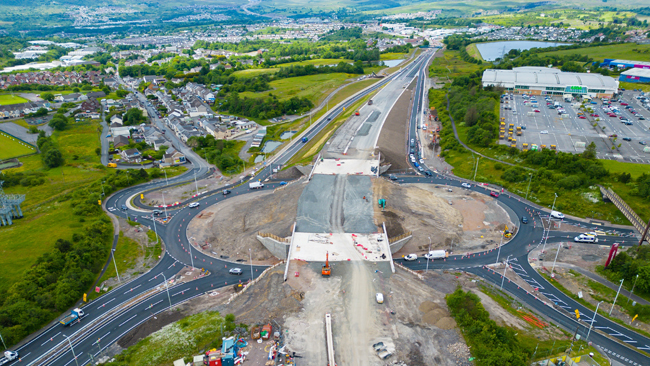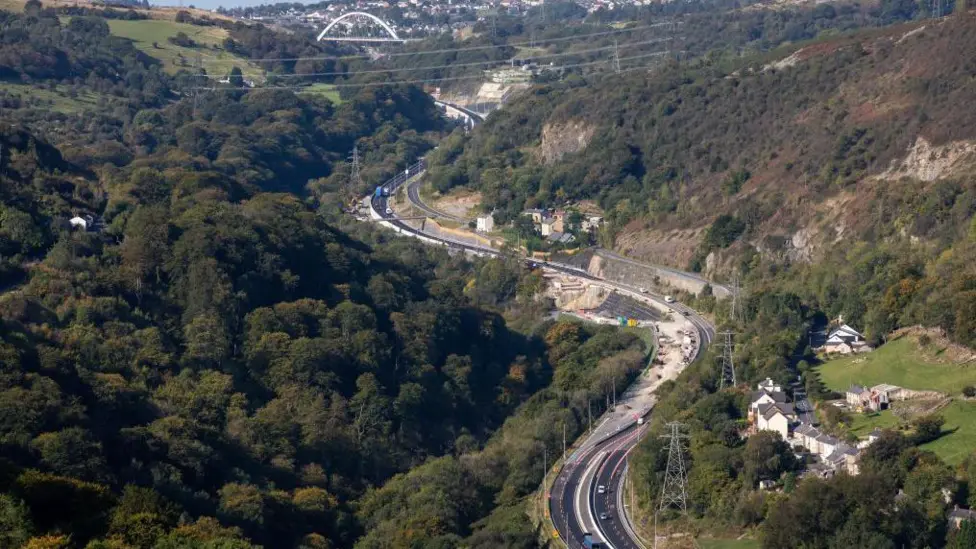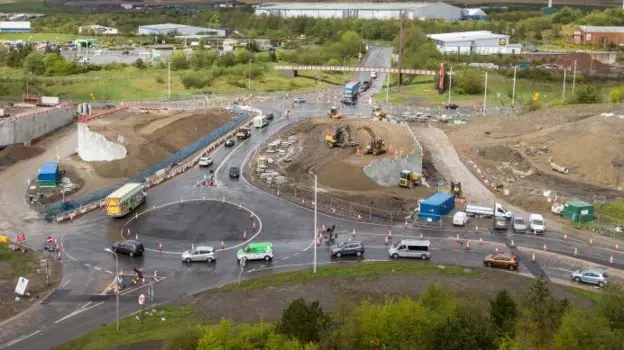
Heads of the Valleys Road or ‘road from hell’ to end
The Heads of the Valleys Road (A465) locally known a the ‘road from hell’ has undergone a monumental transformation, turning a once-dangerous and congested route into a modern dual carriageway. This ambitious project, which links Swansea to Monmouthshire, has taken over two decades to complete, overcoming significant challenges along the way.
A Project Decades in the Making

The need to upgrade the Heads of the Valleys Road was identified as early as 1990 when the UK government outlined an improvement plan. By 2002, work officially began to expand the route into a full dual carriageway, aiming to improve safety and traffic flow. Initially, parts of the road already had two lanes in each direction, but severe congestion and frequent accidents highlighted the urgent need for a complete overhaul.
Fast forward almost 35 years, and after numerous delays, budget overruns, and unexpected challenges—including the impact of devolution, a global pandemic, and unsuitable terrain—the completion of the Heads of the Valleys Road upgrade is finally within reach.
Overcoming Environmental and Engineering Challenges
Spanning the South Wales coalfields and the Brecon Beacons National Park, the road posed significant engineering and environmental challenges. The work was divided into six sections, with priority given to the most dangerous areas first. The scale of construction included:
- 70 new structures, including 40 bridges and 12 new junctions
- The planting of 285,000 trees to offset environmental impact
- The relocation of protected species such as bats, dormice, and great crested newts
- 9 miles (14km) of new routes for pedestrians and cyclists
- The excavation of millions of cubic meters of earth, equivalent to 2,200 Olympic-sized swimming pools
Boosting Safety and Regional Connectivity
Before the upgrade, poor visibility and a lack of overtaking opportunities made the Heads of the Valleys Road a high-risk route for drivers. The previous three-lane configuration often led to serious accidents. Now, with a fully modernized dual carriageway, vehicles can travel at speeds of up to 70mph without the need to stop for roundabouts. However, due to visibility constraints in certain sections, some parts of the road have a 50mph speed limit to ensure driver safety.
Planners also expect the upgrade to serve as a viable alternative to the M4, particularly for traffic between South Wales and the Midlands. With the M4 at Newport frequently congested, the enhanced Heads of the Valleys Road offers a more efficient east-west connection for commuters and businesses alike.
Economic and Social Impact
Welsh ministers argue that the improved ‘road from hell’ will provide a much-needed economic boost to communities that have struggled since the decline of coal mining in the 1980s and 1990s.
“In 50 years’ time, experts will look back and say the single biggest thing the Welsh government has done to raise the prospects of Heads of the Valleys communities is building this road,” said Wales’ Transport Minister Ken Skates.
The A465 has historic significance as part of a World War II prosperity project, originally designed to connect South Wales’ steel industry with the Midlands’ car manufacturing sector. However, the mountainous terrain made road development difficult compared to the faster-built M5 and M50 motorways.
Costs and Controversies
While the benefits of the project are clear, the financial burden has been substantial. The total cost of the Heads of the Valleys Road upgrade is estimated at around £2 billion, significantly higher than initial projections. The final two sections alone have cost £1.4 billion, with the Welsh government financing it through a Mutual Investment Model (MIM)—a scheme likened to purchasing a car on finance, requiring long-term payments of over £40 million per year for 30 years.
Funding challenges have also been exacerbated by Brexit, which removed access to European infrastructure grants that helped finance earlier sections of the project.
Looking Ahead
Despite financial concerns, the completion of the Heads of the Valleys Road is expected to transform travel in South Wales, making it safer, faster, and more efficient. It will provide better access to hospitals, schools, and businesses, while also boosting employment opportunities and economic growth in the region.

For many residents, the end of the long-running roadworks is a welcome relief. “It’s been a nightmare,” said Tanya Houghton from Merthyr Tydfil. “My partner commutes in that direction, and it’s been a nightmare getting to work. I’ll be glad when it’s finished, and I think it’ll be worth it.”
As one of the UK’s largest infrastructure projects, the Heads of the Valleys Road stands as a testament to persistence and engineering innovation, promising a brighter and more connected future for South Wales.












